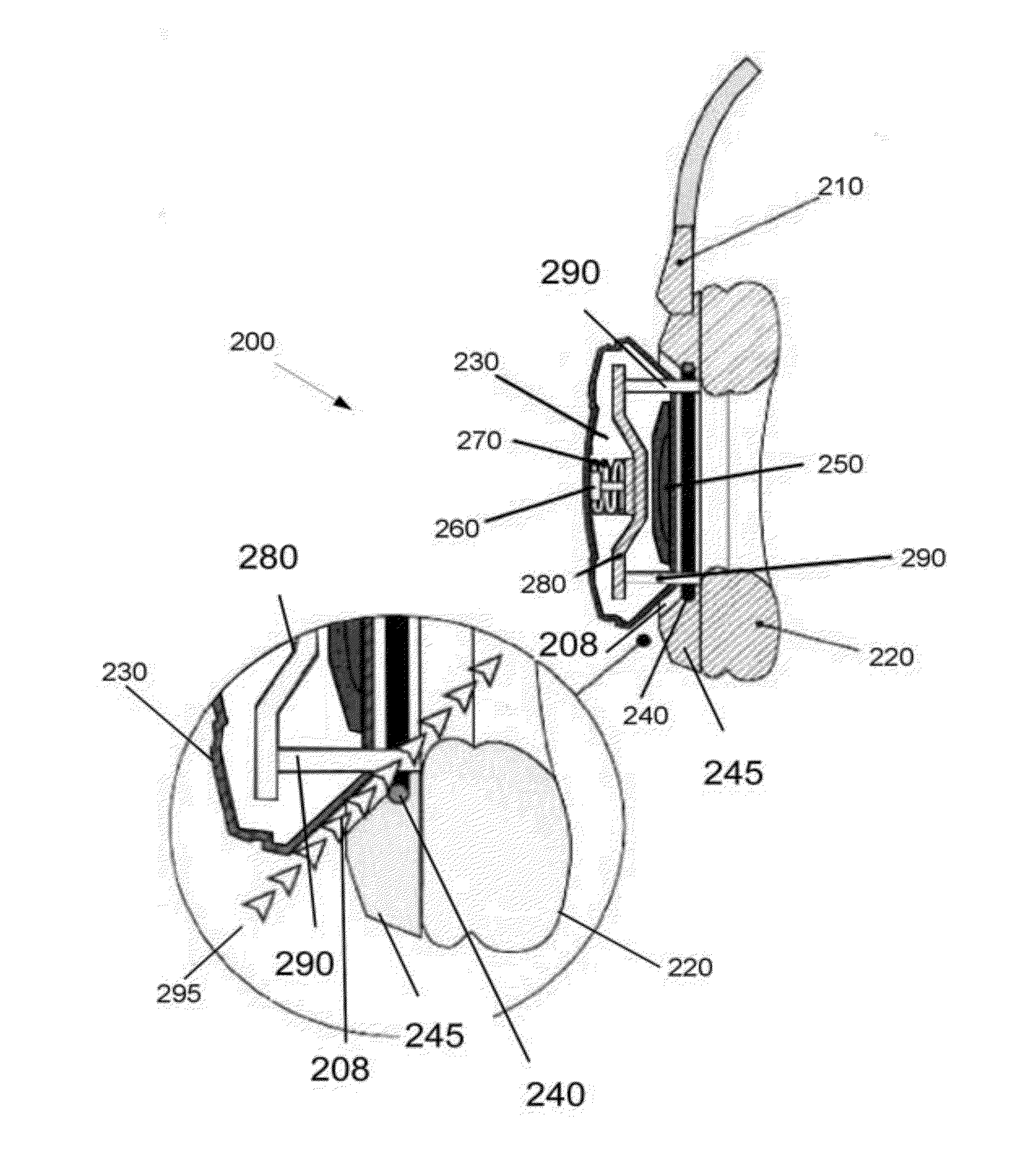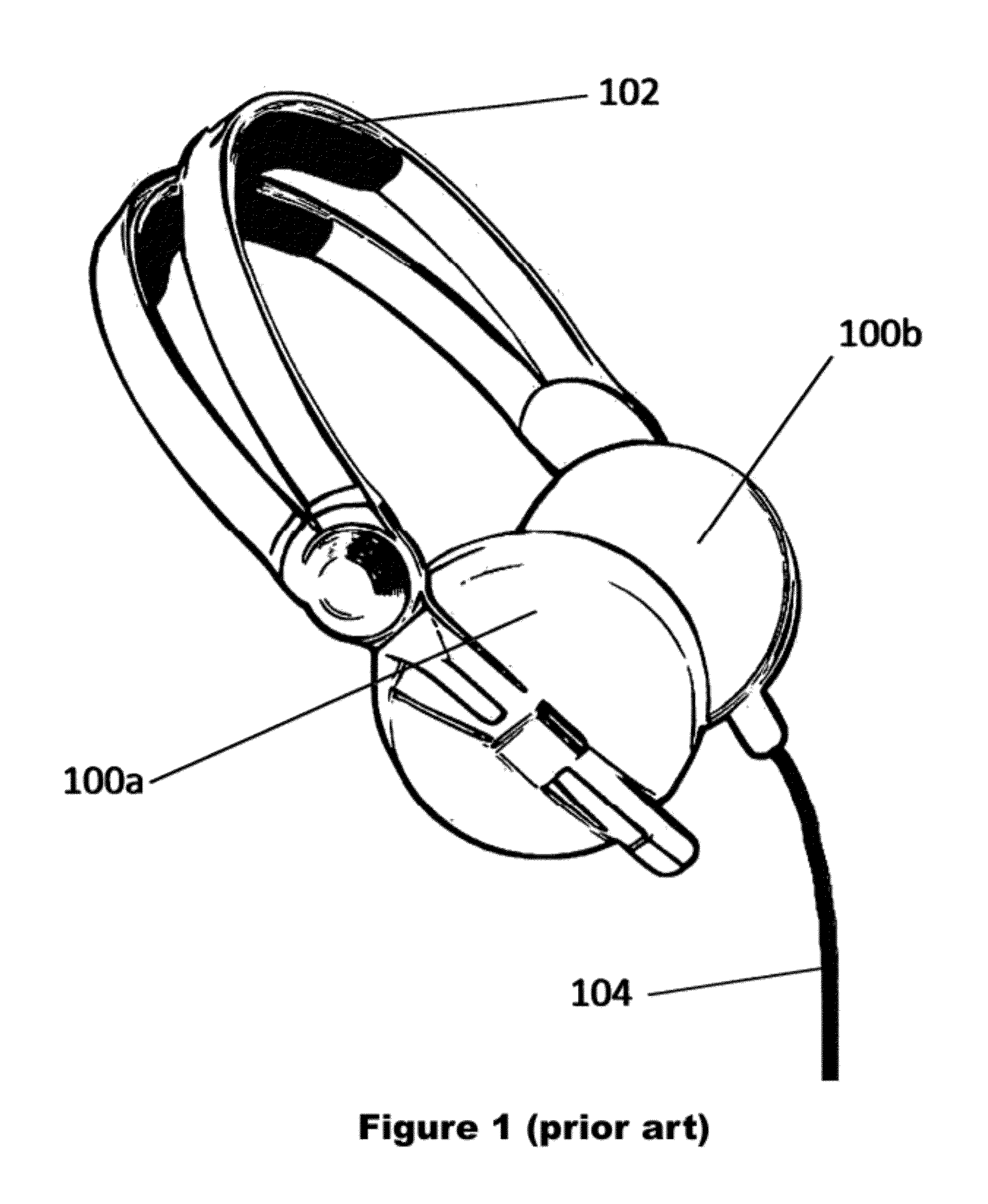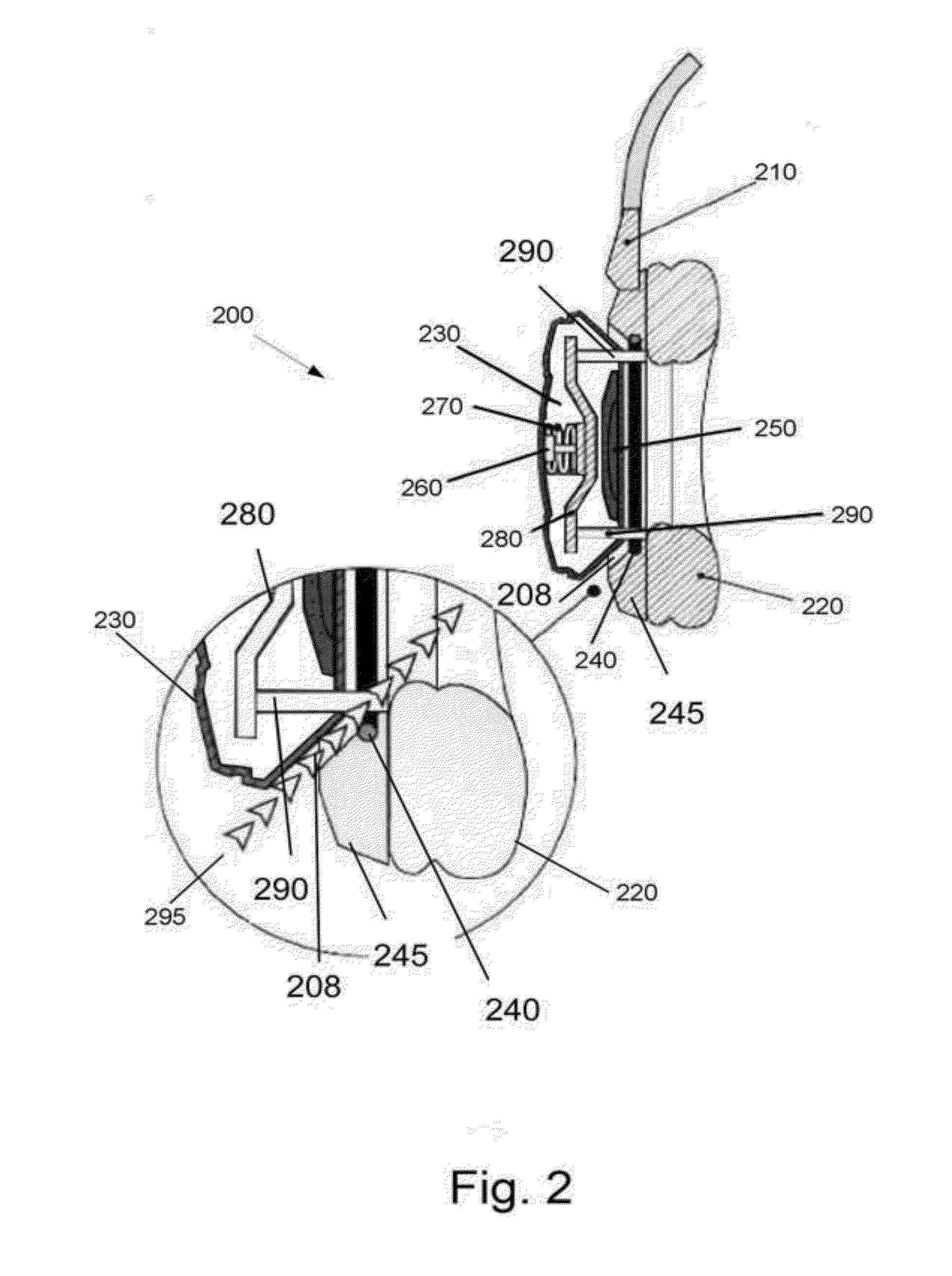Earphone with toggle mechanism
a toggle mechanism and earphone technology, applied in the field of earphones and headsets, can solve the problems of not fully meeting the needs of a user of earphones and ear protection equipment, needing uninhibited access to environmental sounds, and high volume environmental noise that may endanger hearing, etc., and achieve the effect of preventing environmental nois
- Summary
- Abstract
- Description
- Claims
- Application Information
AI Technical Summary
Benefits of technology
Problems solved by technology
Method used
Image
Examples
Embodiment Construction
[0072]In the following detailed description, numerous specific details are set forth regarding the apparatus and method, in order to provide a thorough understanding of the present invention. It will be apparent, however, to one skilled in the art that the present invention may be practiced without such specific details. In other instances, well-known components, structures and techniques have not been shown in detail to avoid unnecessarily obscuring the subject matter of the present invention. Moreover, various examples are provided to explain the operation of the present invention. It should be understood that these examples are exemplary. It is contemplated that there are other methods and systems that are within the scope of the present invention. Also, the same reference numerals are used in the drawings and in the description to refer to the same elements to simplify the description.
[0073]FIG. 2 illustrates an earphone 200. Earphone 200 includes a hands-free toggle mechanism f...
PUM
 Login to View More
Login to View More Abstract
Description
Claims
Application Information
 Login to View More
Login to View More - R&D
- Intellectual Property
- Life Sciences
- Materials
- Tech Scout
- Unparalleled Data Quality
- Higher Quality Content
- 60% Fewer Hallucinations
Browse by: Latest US Patents, China's latest patents, Technical Efficacy Thesaurus, Application Domain, Technology Topic, Popular Technical Reports.
© 2025 PatSnap. All rights reserved.Legal|Privacy policy|Modern Slavery Act Transparency Statement|Sitemap|About US| Contact US: help@patsnap.com



